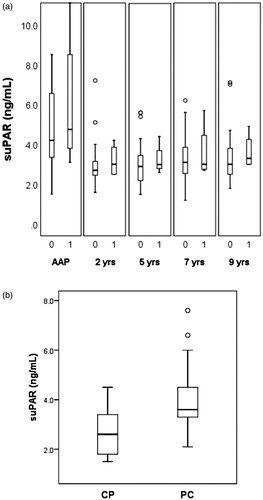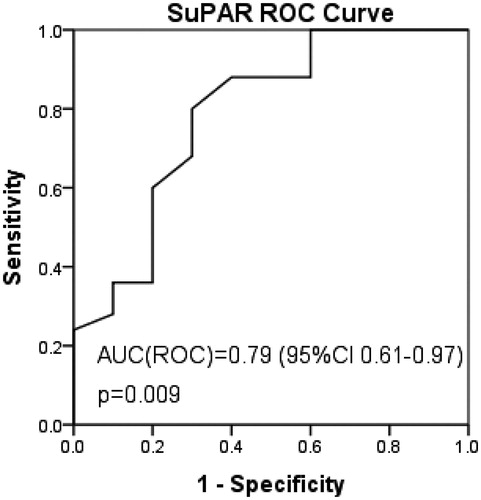Figures & data
Table 1. Demographic data of patients admitted to hospital for their first alcohol-induced acute pancreatitis (AAP) (n = 83).
Table 2. Characteristics of patients with chronic pancreatitis (CP, n = 10) and pancreatic cancer (PC, n = 25).
Figure 1. (a) P-suPAR levels of patients with first alcohol-induced acute pancreatitis (AAP) on admission and during prospective follow-up (n = 83). Group 0: no chronic pancreatitis (CP) during follow-up; group 1: CP developed during follow-up. (b) P-suPAR values of patients with chronic pancreatitis (CP, n = 10) and pancreatic adenocarcinoma (PC, n = 25).

Figure 2. Receive operating characteristics (ROC) curve of P-suPAR to differentiate between chronic pancreatitis (CP) and pancreatic carcinoma (PC) (n = 35).

Table 3. Logistic regression for risk factors for pancreatic carcinoma (PC) in study population [PC and chronic pancreatitis (CP) study groups, n = 35].
